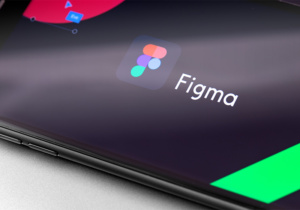Figma: An Overview and Operational Guide
Figma emerges as a cutting-edge, web-based vector graphics editor gaining traction among UX/UI designers, communication firms, and corporations globally. Since its debut in 2015, Figma’s aim has been to democratize design creativity through a browser. Adobe, a powerhouse in digital graphic software, acquired Figma in 2022 for approximately $20 billion, marking a significant milestone in its journey. The future trajectory of Figma remains to be seen, yet it currently stands as a go-to tool for web and app interface design. Let’s delve into Figma’s essence and functionality, particularly for newcomers or those slightly familiar with the platform.
Understanding Figma
Figma serves as a web-based, collaborative platform for graphic design and interface creation. It’s versatile, allowing for an array of design tasks from website and app interface design to social media graphics and presentation creation. This has made Figma a favored tool across various industries.

One of Figma’s hallmark features is its collaborative nature, enabling real-time teamwork on a single file. This facilitates seamless cooperation among designers, developers, and content creators from the project’s onset, saving time and enhancing creativity.
Figma’s browser-based accessibility means no installations or updates are necessary, simplifying operations across different operating systems and eliminating concerns about font compatibility or system changes.
All work is cloud-saved in real-time, minimizing the risk of outdated file versions and the hassle of large file transfers. However, a stable internet connection is essential for Figma use.

Figma also offers a basic free version, allowing teams to work on up to three files per project with a 30-day version history. Educational access to Figma’s professional features is available for students and teachers at no cost.
Figma’s Key Features:
- A versatile tool for digital design, including websites and app interfaces.
- Web-based, requiring no software installation.
- Supports collaborative work among various users.
- Real-time cloud saving.
- Free access to its basic features.
How Figma Operates
Figma shines not just in final design execution but throughout the design process, from brainstorming and prototyping to feedback collection and implementation.

To get started, one simply signs up on figma.com, setting up teams, projects, and files, and inviting collaborators. The workspace is vast, allowing for the design of various screens within a project.

Figma’s frame tool and component libraries streamline the design process, offering pre-made elements like navigation bars and buttons. The Figma community is a resource-rich environment for inspiration and design elements.
Prototyping in Figma enables early simulation of app or website navigation, aiding in the iterative design process. Feedback is easily gathered through comments and post-its, facilitating team consensus and improvements.

For those keen on deepening their Figma expertise, numerous online resources and courses are available, ranging from Figma’s own tutorials to community-led training sessions.
As we explore Figma’s capabilities, it’s clear the platform offers vast potential for creative projects. Whether you’re embarking on your first design venture or aiming to refine your skills, Figma provides the tools and community support to bring your ideas to life.

